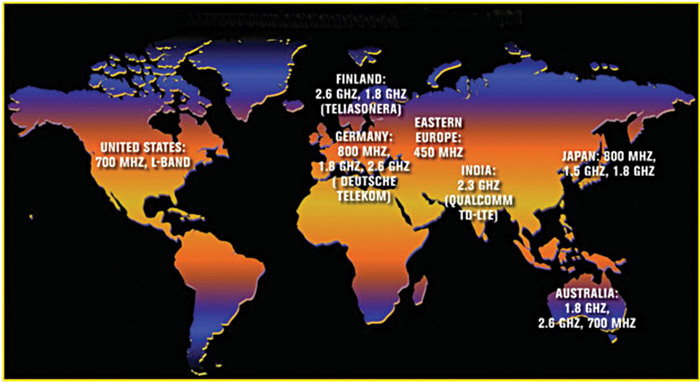Long Term Evolution (LTE) is a 3GPP standard that provides uplink speed of up to 50 megabits per second (Mbps) and downlink speed of up to 100 Mbps. The 3GPP (3rd Generation Partnership Project) unites telecommunications standards bodies, and provides their members with a stable environment to produce successful reports and specifications that define 3GPP technologies such as LTE—a major advance in cellular technology.

When I met Adrian Scrase, head of Mobile Competence Centre, 3GPP, in 2011, he told me that when he was in India in 2010 very few people were aware of LTE, and today almost everyone in India is looking at it as the next very high-speed data technology.
At the 3rd LTE India 2012 International Conference held in May 2012, Scrase commented, “LTE was a dream for the Indian operators, but today releasing the growth and the level of satisfaction required, LTE has become a reality in India with Airtel launching their services first in Kolkata in April and subsequently in Bengaluru in May 2012.”
LTE—a multi-frequency technology
One thing unique about LTE is that the standard can be used with several different frequency bands. This means that operators can deploy it at lower frequencies with better propagation characteristics, since the lower the frequency, the lower are the losses.
The 3GPP standard lists as many as 20 different frequency bands for frequency-division duplex (FDD) LTE, with another nine bands for time-division duplex (TDD) LTE. Operators around the globe are beginning to reap the benefit of LTE’s spectrum flexibility. The broadband wireless access (BWA) spectrum in India is one 20MHz block of the spectrum (per operator per circle). This implies that the same spectrum shall be used for sending or receiving data and hence it is called TDD spectrum. In contrast, 2.1GHz FDD 3G spectrum assignments comprise a 5MHz component for sending and a separate 5MHz component for receiving wireless transmissions. India went in for TDD mode as it could not afford to use a large frequency band that FDD calls for.
TDD spectrum has certain advantages and some shortcomings too. Operators may choose to use the spectrum in a downlink- (users receiving data) or uplink-intensive mode, depending on the nature of popular applications in their networks. For example, if most users download a lot of video clips frequently but upload only occasionally, operators may use the spectrum in a configuration that favours downlink transmissions.
FDD spectrum allows no such flexibility; in the above example, the uplink portion of the spectrum is effectively wasted. There is a cost, however, in TDD mode wherein there needs to be a guard period between downlink and uplink transmissions.
TeliaSonera has launched LTE in Finland’s 2.6GHz band and will expand the services at 1.8 GHz. Six operators in Eastern Europe have applied to the International Telecommunications Union to deploy LTE in the refarmed 450MHz spectrum presently being used for CDMA. Deutsche Telekom is looking to deploy LTE in 800MHz, 1.8GHz and 2.6GHz bands in Germany.
In Japan, LTE deployments are in 800MHz, 1.5GHz and 1.8GHz bands, while Verizon is using the 700MHz LTE network in the United States.
The device and chipset issue
While the capacity to launch LTE in a wide gamut of spectrum bands has advantages, it brings the baggage of complications for chipmakers and device manufacturers. Which frequencies will be used by operators is a big question today as it will significantly impact costs, vendor margins, time to market and distribution, create technical challenges for global roaming and inhibit decision-making process within the operator community. It is important for chipset manufacturers and OEMs such as Qualcomm, Altair and Broadcom to understand the operator demand for LTE deployments by band so that they can then produce them on a large scale.
From the table given here, it is evident that a considerably larger number of devices, including dongles, routers, smartphones and tablets, are available on LTE-FDD, and more so in the 700MHz band, due to adoptability of the same in the US market. The LTE ecosystem is evolving at great speed with 347 LTE devices launched by 63 manufacturers available in the market as of April 2012.
Increased spectrum efficiency
Spectral efficiency is the information rate that can be transmitted over a given bandwidth in a specific communication system. It is a measure of how efficiently a limited frequency spectrum is utilised by the physical-layer protocol, and sometimes by the media access control (channel access protocol).








